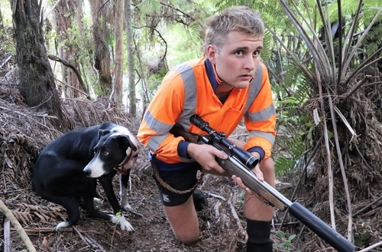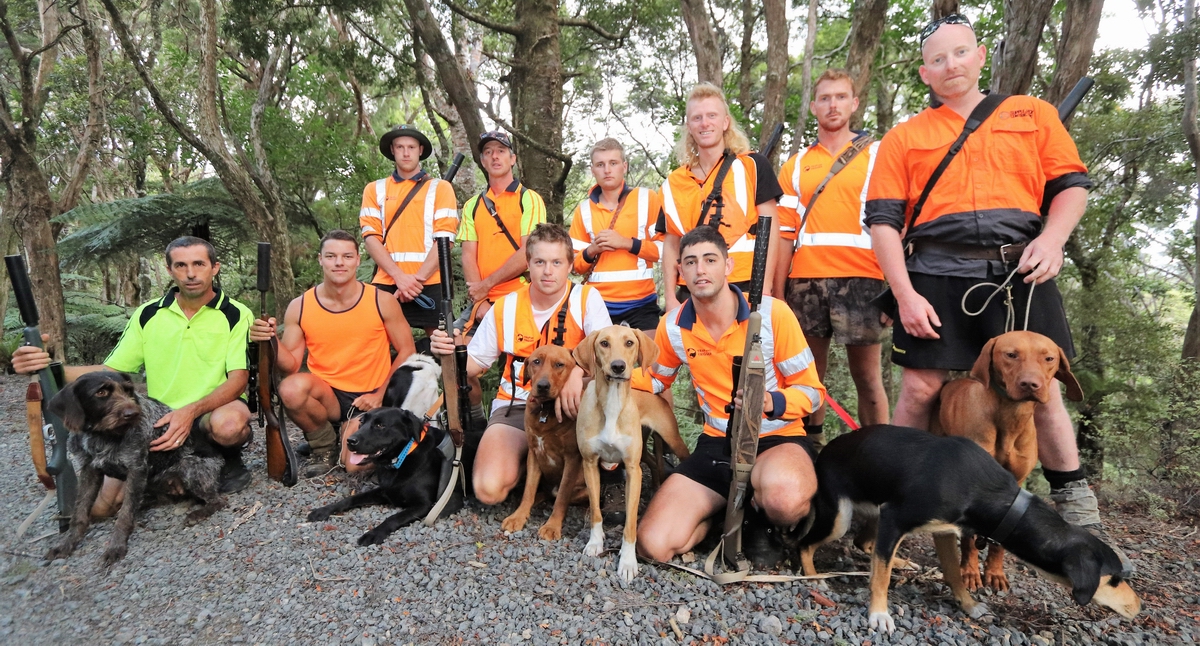Goat control to clear way for Russell deer operation
22 Feb 2022, 1:47 PM
Professional hunters are in the Russell Forest hunting feral goats ahead of a later operation targeting unwanted sika deer.
A small sika herd in Russell Forest has been designated as top priority for eradication by Northland Regional Council and its stakeholders because of the impact the deer have on the forest’s native biodiversity.
Northland Regional Councillor Jack Craw, who chairs the council’s Biosecurity and Biodiversity Working Party, says the deer’s potential role as hosts of bovine tuberculosis and vector for kauri dieback disease is also an issue.
“Council has been working closely with local hapu, the Department of Conservation, and the local community to make this happen.”
A sika DNA survey was undertaken in May last year across sika habitat to enable costs for an eradication to be assessed and techniques to be reviewed in anticipation of a looming eradication project this year.
The collection of deer faeces and use of DNA analysis provides information on the home range and identity of individual sika and is a technique which has worked successfully in other deer eradication projects around New Zealand and the world.
However, Cr Craw says high numbers of feral goats within the forest is a complicating factor for the sika eradication.
“Goat faeces can be confused with those of sika and subsequent analysis of goat faeces inadvertently collected as part of the sika survey will add significant costs and time to the operation.”
 Featherston-based professional hunter Cole Ritchie and his three-year-old dog ‘Flea’ are among a team of hunters hunting goats in the Russell Forest.
Featherston-based professional hunter Cole Ritchie and his three-year-old dog ‘Flea’ are among a team of hunters hunting goats in the Russell Forest.
To reduce this risk, one of the initial steps in the sika eradication project will be to reduce feral goat populations before undertaking the sika DNA survey, which Cr Craw says will also have huge benefits for the ngāhere (forest).
“A team of professional goat hunters will be hunting goats over approximately 2500 hectares of private and conservation land over a two-week period using kiwi aversion trained bailing dogs, as well as a helicopter for transport to high ridges.”
The hunters will also be trained in kauri dieback mitigation methods to ensure the disease will not be spread during the hunt.
Councillor Craw says when the goat numbers have been reduced, a DNA survey will be implemented over the entire Russell Forest to confirm the sika population which will take five to six months.
The priority for this phase of the project is to collect DNA samples from all the potential sika habitat within Russell Forest so we get an accurate measure of the population status.
“Spacing at 150 metres ensures that the survey will collect multiple samples from the home range of every deer present in the area. The analysis of the DNA will enable us to determine how many deer are present, accurately map the home range, and determine the sex of each sika.”
The survey – which will cover about 7000ha – will be carried out in Spring this year when weather is dry to avoid spread of kauri dieback.

The team of professional hunters hunting goats in the Russell Forest.
